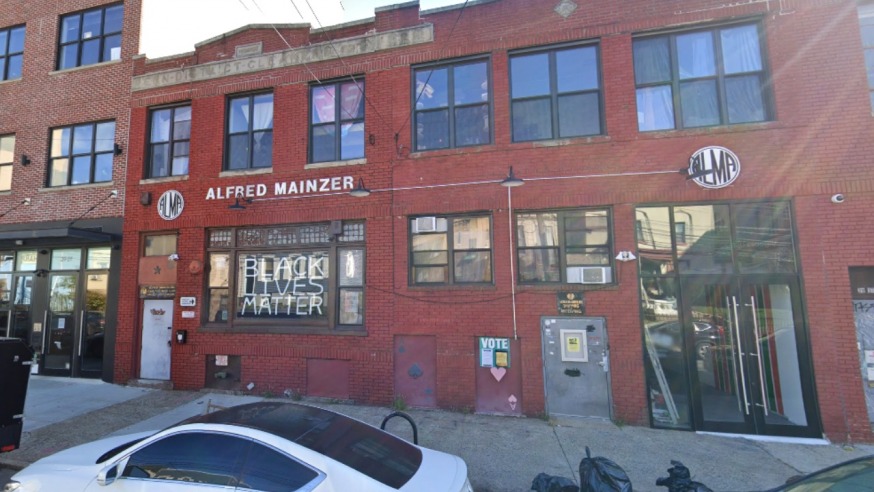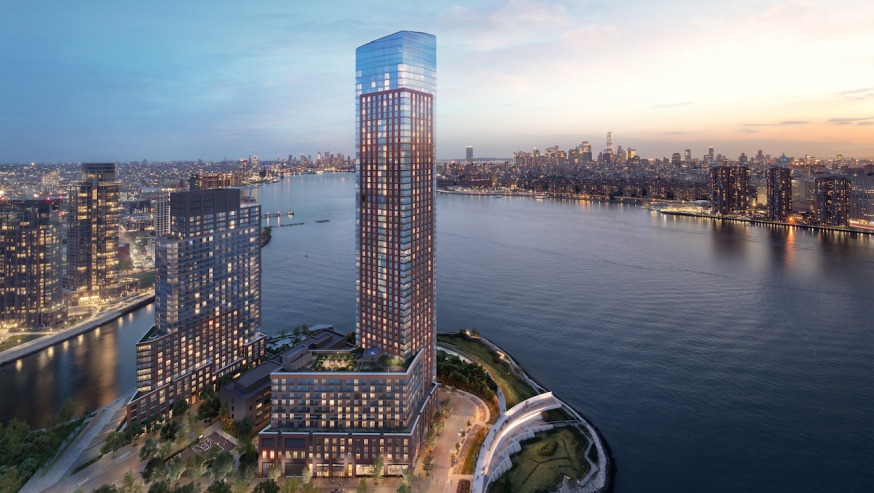
Flux Factory announced Friday that it has bought its headquarters at 39-31 29th St. in Dutch Kills (Photo: Google Maps)
Nov. 23, 2021 By Michael Dorgan
The operators of a Queens-based arts non-profit have purchased two premises in Long Island City.
Flux Factory, a group that works with emerging artists from across the city, announced Friday that it has bought its 39-31 29th St. headquarters, which is located in the Dutch Kills section of Long Island City. The organization currently operates out of the two-story space that it has been leasing since 2009.
The group also announced that it has purchased space in a new development that is part of the Hunters Point South mega development. It has bought space on the ground floor of the South Tower at Gotham Point, a two-tower development that is going up at 57-28 2nd St. The non-profit will be calling the space “Flux IV.”
The terms of the two deals were not disclosed.
Representatives of the Flux Factory said the purchases will help sustain the organization’s core programs, exhibitions and collaborative opportunities with other artists. The acquisitions were funded by the City, via allocations provided by Council Member Jimmy Van Bramer, the Queens Borough President’s Office and the Dept. of Cultural Affairs.
Nat Roe, the executive director of Flux Factory, said the purchases represent major milestones for the non-profit since it has looked to buy its own premises for years.
Flux Factory was founded in Williamsburg in 1994 and moved to Sunnyside in 2002 due to rising costs. In 2009 the organization then moved to its 29th Street location.
“We’ve constantly faced the threat of displacement, compromising our ability to support and promote artists most effectively,” Roe said.
The Dutch Kills building is 9,000 square feet and its acquisition will ensure the non-profit continues to host its “artist-in resident” program. This program provides artists with the ability to live on site while they develop their creative work.
The space consists of 16 private studios and 8 common workspaces for art production. It also includes a 1,400 square foot gallery where residents develop art exhibitions across a wide range of disciplines such as painting, poetry, literary, spoken word and sound art. The building also includes living space.
Meanwhile, the Flux IV location will be 3,000 square feet in size and is scheduled to open next summer. It will serve as a satellite space for the organization.
The non-profit said it will be able to expand its operations further into Queens through the Flux IV space. The new location will include a gallery and workspace for artists.
Since it was founded, Flux Factory has hosted more than 300 artists-in-residencies from around the world and more than 700 exhibitions.

Flux Factory has purchased space on the ground floor of the Gotham Point South Tower, the shorter of the two towers by the Newtown Creek. Gotham’s North Tower is the taller building on the right (Rendering courtesy of VUW)





